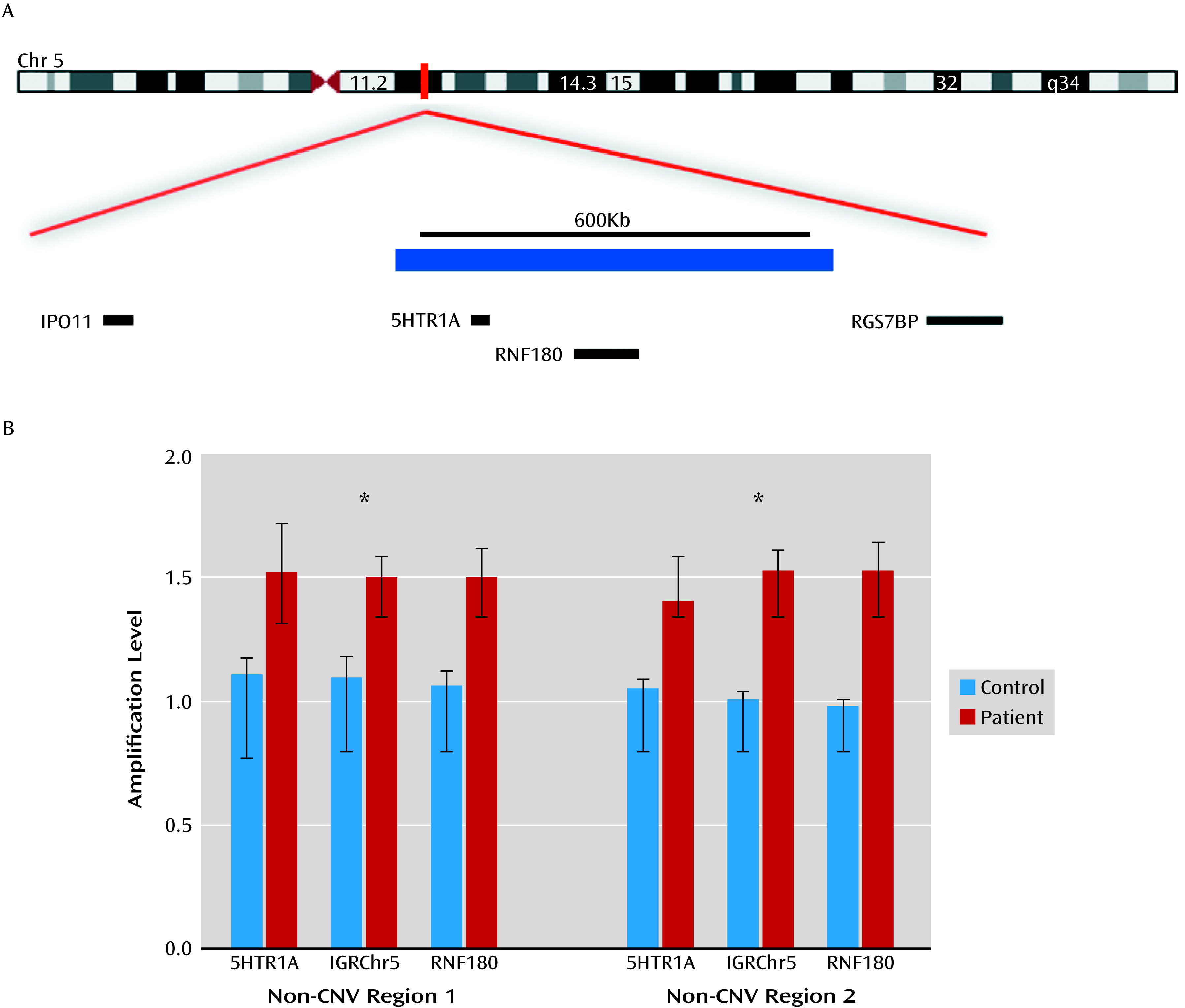Bipolar Disorder and a History of Suicide Attempts With a Duplication in 5HTR1A

The patient was a 49-year-old woman with bipolar I disorder. She had no history of psychosis or alcohol and drug abuse or dependence, but she did have a history of multiple suicide attempts. She was divorced, was living on disability, and had no history of family or partner violence. In the year prior to enrollment in the study, her illness had a rapid cycling course (70% of days depressed, 90% irritable, 80% anxious, and 10% elevated mood). She entered the study euthymic, but she experienced a major depressive episode that was treated with lamotrigine; she exited the study before recovery. She reported the onset of her illness at age 16, with no history of antidepressant-associated switching from depression to mania. She characterized depressive and manic episodes in her life as “too numerous to count.”
Footnotes
References
Information & Authors
Information
Published In
History
Authors
Metrics & Citations
Metrics
Citations
Export Citations
If you have the appropriate software installed, you can download article citation data to the citation manager of your choice. Simply select your manager software from the list below and click Download.
For more information or tips please see 'Downloading to a citation manager' in the Help menu.
View Options
View options
PDF/EPUB
View PDF/EPUBLogin options
Already a subscriber? Access your subscription through your login credentials or your institution for full access to this article.
Personal login Institutional Login Open Athens loginNot a subscriber?
PsychiatryOnline subscription options offer access to the DSM-5-TR® library, books, journals, CME, and patient resources. This all-in-one virtual library provides psychiatrists and mental health professionals with key resources for diagnosis, treatment, research, and professional development.
Need more help? PsychiatryOnline Customer Service may be reached by emailing [email protected] or by calling 800-368-5777 (in the U.S.) or 703-907-7322 (outside the U.S.).

